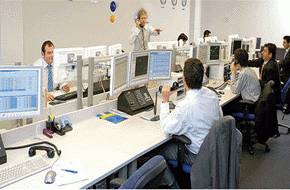
The AUD and EUR show the best gains for the day, with safe-havens JPY and CHF dragging the chain, against a backdrop of improved risk appetite, with equity markets up, the VIX index back below 12, and global bond rates higher.
The ECB has been a key focus for the market overnight ahead of its policy meeting next week. ECB Chief Economist Praet confirmed yesterday’s Bloomberg story that at the 14 June policy meeting the Governing Council will be considering “whether the progress so far has been sufficient to warrant a gradual unwinding of our net asset purchases”. The ECB’s Knot followed, telling the Dutch Parliament that “it’s reasonable to announce the end of the net asset purchases soon”.
The focus back on the unwinding of the ECB’s quantitative easing policy sees EUR make further gains, almost reaching 1.18 overnight and currently 1.1770. NZD/EUR is down 0.3% to 0.5975. If not for lingering concerns about Italy, the euro might have made further headway. Markets remain nervous about Italian PM Conte who heads the new populist government. He won a vote of confidence in the Senate and said that a euro exit “has never been discussed” and isn’t an objective of the government, but concern remains focused on the government’s profligate fiscal plans. After comparing economic growth in Italy against the EU he noted some confidence in his government’s “negotiating power” because Italy’s interests match Europe’s.
Italy’s bond market remains under pressure, with its 10-year rate up 14bps to 2.90% and taking its gain for the week to about 25bps. However, rather than seeing a flood to safe-haven bond markets, the focus on ECB unwinding its asset purchase programme sees higher bond rates across the rest of Europe as well and this has spilled over into US Treasuries. Germany’s 10-year rate is up a chunky 10bps to 0.46% while the US 10-year rate is up 4½bps to 2.97%. Upward pressure on global rates should see NZ rates climb further, after the 5bps increase already seen this week for 10-year swaps and government bonds.
The AUD jumped higher after stronger than expected Q1 GDP data yesterday, and it has sustained that move overnight. For the day, the AUD is up 0.6% to 0.7665. With the NZD range-bound over the past few days anchored around the 0.7030 mark, NZD/AUD has drifted down to 0.9175. The pick-up in Australian GDP growth was noted in the RBA’s Statement earlier this week and the figures don’t materially change the outlook for policy, with the market still seeing little chance of a rate hike before the middle of next year. The trend for the unemployment rate and wages and CPI figures are more important drivers for the RBA’s next policy move.
Soft NZ building work data yesterday met our low expectations and was another piece of evidence pointing to a soft Q1 GDP result, in contrast to Australia. Our current production-based estimate sits on the verge of 0.4/0.5% with downside risk and our expenditure estimate is closer to zero. Our working assumption remains that growth will prove to be better than that over the rest of the year.
In overnight economic news, the US trade deficit narrowed to a 7-month low as exports hit a record high, adding to the case for a strong Q2 GDP result. The Atlanta Fed’s GDPNow forecast sits at 4.5%. Trump’s economic advisor Kudlow is trying to play down concerns about a trade war, suggesting that US trade tensions are just a “family quarrel”.
There is nothing much else to report. The NZD is flat to slightly down on most crosses apart from NZD/JPY which is up 0.4% to 77.4, as the JPY shows its typical struggle against a backdrop of rising global rates.
The economic calendar over the rest of the week is light, with focus now turning to the G7 leaders’ meeting that kicks off at the end of the week. The Washington Post reports that Trump might refuse to sign off on the G7 statement at the end of the meeting.
Get our daily currency email by signing up here:
Daily exchange rates
Select chart tabs
BNZ Markets research is available here.


We welcome your comments below. If you are not already registered, please register to comment
Remember we welcome robust, respectful and insightful debate. We don't welcome abusive or defamatory comments and will de-register those repeatedly making such comments. Our current comment policy is here.